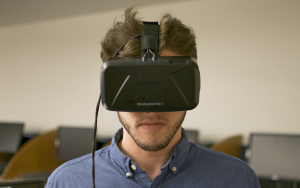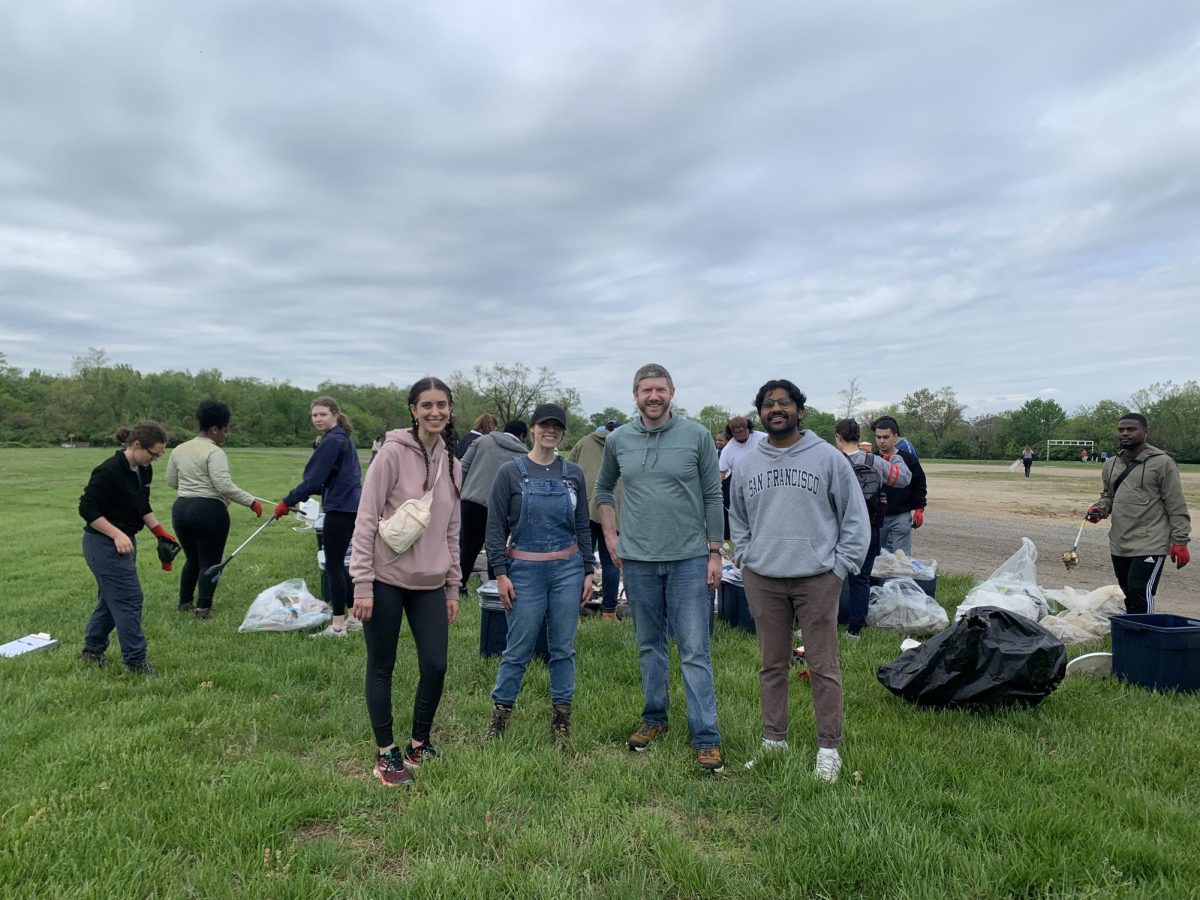
Students and faculty can sign up for 15-minute sessions at the Gelardin New Media Center to use the Oculus Rift virtual reality headset from this Wednesday to Dec. 18.
The Gelardin New Media Center in Lauinger Library began offering the Oculus Rift, a virtual reality software, to students Wednesday.
The Rift, a software developed by technology company Oculus VR, allows users to fully immerse in a virtual reality through its head-mounted display.
Students can sign up on the library website for a 15-minute session with the Rift until Dec. 18. As of press time, the next available slots are on Dec. 2.
Gelardin purchased two Rift headsets for $350 in May using funds donated by the Caroon family. One headset will remain in the library, while the other will be available for checkout by faculty and students.
Gelardin Department Head Beth Marhanka said she advocated for the Rift at Georgetown after trying the program firsthand at the University of Virginia.
“I was blown away,” Marhanka said. “This is something that I want Georgetown students and faculty to experience, to see what they might come up with [and] to see what ideas they might develop.”
There are a variety of programs available on the virtual reality headset, each offering a different experience. Two of these programs, GE Neuro and Titans of Space, have a scientific focus, while the others, such as Doors of Silence, No Limits and Project Cars, are more recreational.
GE Neuro, the world’s first-ever animated virtual reality neuro experience, takes the user on a tour of the human brain. Viewers can explore the mind’s thoughts, ideas, fears and memories. Titans of Space is a guided informational tour of planets and stars shrunk down to one millionth of their actual size.
Doors of Silence is a horror experience in which users attempt to escape a shadowy series of haunted rooms. No Limits takes the viewer on a wild roller-coaster ride, and Project Cars is a popular automobile racing title.
Marhanka said purchasing the Rift is in line with Gelardin’s mission to expose students to different media and inspire experimentation with new technology.
“You might think of some application in your discipline that could change everything, but you have to have those tools available in order to come up with that idea,” Marhanka said.
The ability to realistically mimic reality may prove useful in education. Marhanka said she hopes faculty and students will be inspired by their experiences with the Rift.
“What I hope is that someone comes in and experiences it and says, ‘Wow, I’ve been looking for a way to teach people,’” Marhanka said.
According to Marhanka, other proposed applications for the Rift include making a virtual classroom to train educators and a virtual audience to practice public speaking. There are currently no plans to use it with university courses, although Marhanka said she is open to the possibility.
Moving forward, Marhanka said Gelardin’s next endeavor is to create a “makers’ space,” where faculty and students will be encouraged to make projects with tools that they might not normally have, like 3-D printers and sewing machines. Gelardin installed a 3-D printer in 2014.
Jane Doyle (COL ’18), a student who engaged in a session with the Rift, said her experience with Titans of Space offered an enlightening perspective on the solar system.
“You get a sense of how big things are and the scale of things that you wouldn’t normally get,” Doyle said.
Deja Lindsey (COL ’18), who also participated in a session, said although the software has some flaws, she enjoyed her overall experience with the Rift.
“I think it has a long way to go. … Just in general, it does [need] some work,” Lindsey said. “But for the first round, it was really, really good.”




















